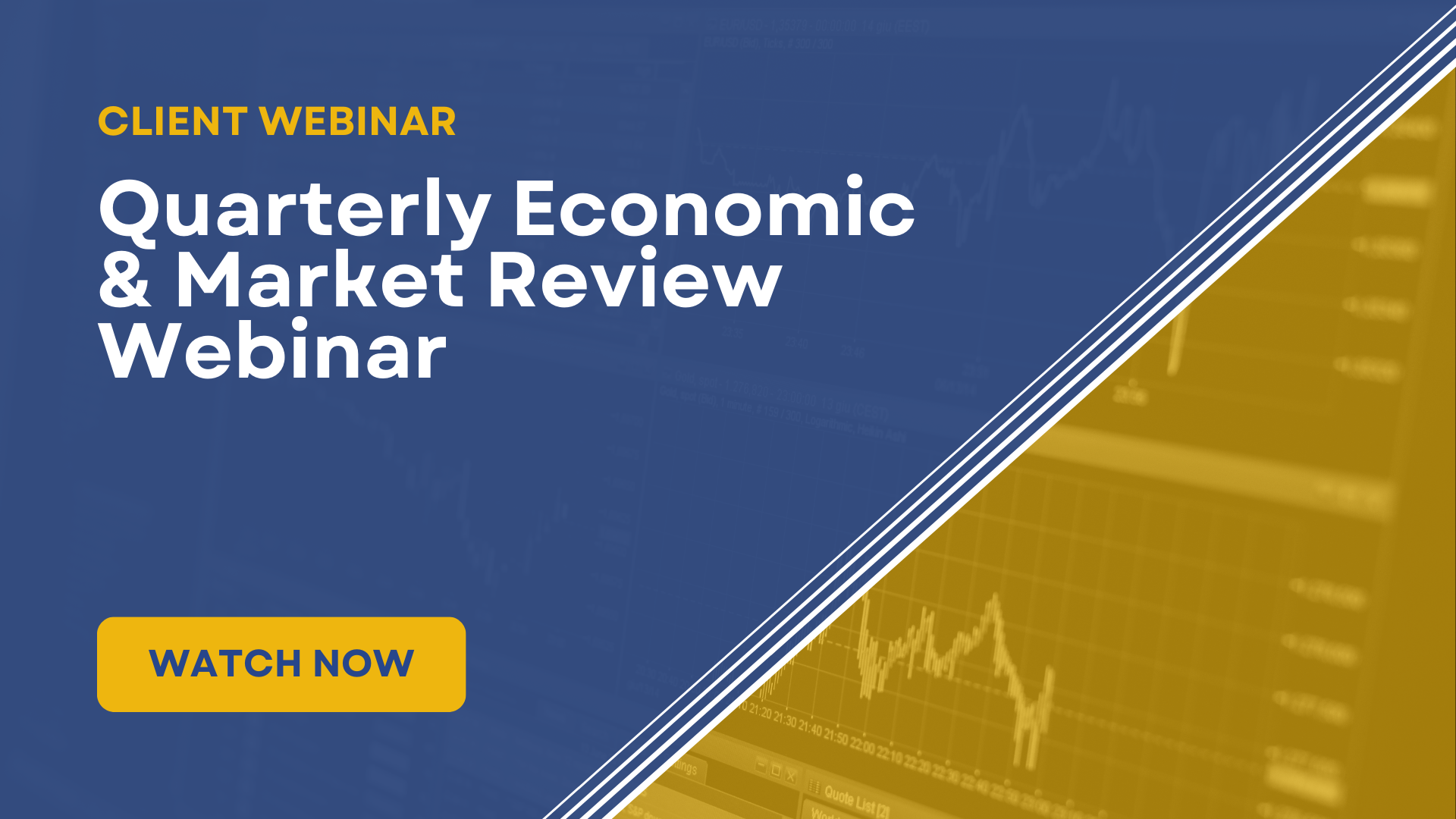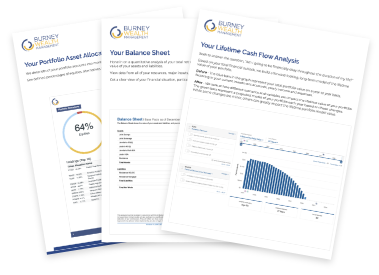Economic & Market Review: Q2 2024 [Webinar Summary]

Presenters: Andy Pratt, CFA, CAIA, and Adam Newman, CFA, CFP®, MT, RICP®
Here is the webinar recording from July 10th, 2024. You can browse topics discussed and main takeaways using the sections and time stamps below:
Click the time-stamp in each section title, and you will jump right to that part of the video in a new screen!
- 1:05 - Quarterly Market Summary
- 2:06 - Long Term Market Summary
- 6:08 - Institutional Sentiment
- 8:06 - Waiting for Volatility
- 8:57 - A History of Market Ups & Downs
- 14:44 - Returns During & After US Election Years
- 17:33 - Mega-Caps Strike Back
- 20:29 - Mega-Cap Outperformance Trend is Nothing New
- 23:21 - Momentum Shifting Towards Large-Caps, But more of a True Small-Cap Phase Than at First Glance
- 25:45 - Strong Growth Momentum Continues
- 26:50 - Progress on Inflation, Two Cuts This Year
- 28:43 - Live Q&A
Quarterly Market Summary (1:05)

-
The second quarter of 2024 was relatively quiet compared to the exciting start of the year, with major asset classes posting fairly average returns.
-
Emerging markets were the leading pocket of global equity markets, up about 5%, while the US market was second, up just over 3%.
-
The bond market was relatively flat for the quarter.
Long-Term Market Summary (02:06)

-
The S&P 500 has hit 36 new all-time highs so far in 2024, which if continued, would result in over 70 all-time highs for the year - close to the record of 77 set in 1995.
-
The past few quarters have shown slightly above-average equity returns for the US over the previous 10 years, while returns for the rest of the world have been well below average.
-
The bond market has experienced challenges in recent years due to interest rate changes.
-
Burney recently released a piece on their asset allocation model, explaining how they approach portfolio diversification and why their approach differs from traditional retirement portfolios.
-
Adam emphasizes that periods of good market performance are ideal times to reassess portfolio risk levels and make adjustments if necessary.
Institutional Sentiment (6:08)

-
A JPMorgan survey of institutional money managers showed only 17% were looking to add to equity exposure, indicating a lack of frothiness or over-exuberance among institutional investors.
-
Both institutional and retail investor sentiment indicators are reading around neutral, suggesting there hasn't been a mad dash towards stocks that is typically expected in the later stages of a bull market.
-
The current bull market hasn't caught on with either institutional or retail investors, which may have helped sustain the upward movement in equities as people gradually file in to participate.
Waiting for Volatility (8:06)

-
It has been 345 days since the S&P 500 experienced a 2% daily drop, which is an unusually long period of low volatility.
-
There have been periods in the past with much longer stretches without a 2% drop, as well as periods of much higher volatility (such as 2020 through the end of 2022).
-
Since the bottom of the last bear market, there has been a slow climb in the market with overall fairly muted volatility, coupled with muted investor sentiment.
A History of Market Ups & Downs (8:57)



-
Over the past 100 years, the market has been in an uptrend more often than in bear markets (defined as a top-to-bottom drop of 20% or more).
-
Approximately 75% of the time, the market is in an upward trend, while the other 25% experiences normal volatility expected for higher returns.
-
The current bull market is not overstretched by historical standards, despite ongoing for nearly two years.
-
The market has weathered various headlines and global geopolitical events, especially considering it's an election year.
-
A 10-15% pullback or correction would be considered normal and healthy in any given year, even when overall returns are strongly positive.
-
Andy & Adam's expectation is that the general economic backdrop is still strong, with inflation coming down and both corporations and consumers doing well.
Returns During & After US Election Years (14:44)

-
Election years and post-election years typically show strong, if not average, returns for stocks, regardless of which party wins or whether it's a re-election.
-
Adam & Andy emphasize that elections themselves, while important to discuss, are not typically intermediate or long-term market movers.
-
Burney plans to do a dedicated "election special" presentation at the end of August (August 28th) to discuss investing and the economic climate during an election year in more depth.
-
The presenters stress that markets and the economy are incredibly resilient, and it's very difficult for a single person, even a president, to significantly sway the economic machine.
Mega-Caps Strike Back (17:33)

-
The majority of stock market returns in the first half of 2024 have come from the "Magnificent 7" stocks, similar to the trend in 2023.
-
There's an extreme 13 percentage point differential between the market cap weighted version of the S&P 500 and the equal weight version over the last six months. NVIDIA alone accounts for one-third of the 15% return in the S&P 500 year-to-date.
-
While the Magnificent 7 are dominating, growth stocks are outperforming value stocks across all size levels (large, mid, and small). Mid-growth stocks have performed particularly well, outperforming large value stocks and being the second-best performing area of the market over recent time frames.
Mega-Cap Outperformance Trend is Nothing New (20:29)



-
The mega-cap outperformance trend has been consistent throughout the 2020s, with the exception of 2022.
-
The current level of market concentration is not unusual when compared to historical data, particularly from the 1950s and 1960s.
-
Unlike previous periods of high market concentration (such as the dot-com era), the current mega-cap stocks have strong market fundamentals driving their performance, with impressive earnings growth supporting their valuations.
Momentum Shifting Towards Large-Caps, But More of a True Small-Cap Phase than at First Glance (25:45)


- Recent data shows momentum shifting back towards large-cap stocks, leading to a reset of portfolio targets from 60% large-cap to 70% large-cap.
- Looking at equal-weight indexes rather than market-cap weighted ones reveals that there was actually a more significant small-cap phase than initially apparent. Over the 3 years post-COVID market crash, small-caps had a good run when measured on an equal-weight basis.
- Mid-cap growth stocks have performed particularly well, often outperforming other large stocks and large value stocks. When the strategy shifts away from large-caps, it's often tilting towards mid-caps rather than just small-caps.
Strong Growth Momentum Continues (26:50)

- The momentum for growth stocks has been strong and consistent since early 2023, when the portfolio strategy shifted from value to growth.
- Adam & Andy have a high degree of conviction that they are in the middle of a growth phase, and are maintaining their growth-leaning strategy in portfolios.
- This growth momentum is expected to continue, partly due to the anticipation of the Federal Reserve beginning to cut interest rates, which historically has been bullish for growth stocks.
Progress on Inflation(26:50)


- Real-time measures of GDP are showing cooling conditions, which is what the Fed wants to see to help control inflation without causing a recession.
- Recent inflation data has come in softer, indicating that the higher-than-expected inflation readings in the first half of the year were likely short-term anomalies.
- The market is currently pricing in two Federal Reserve rate cuts this year: one in September and another in December. Goldman Sachs predicts this will be the start of a major cutting phase, with the terminal rate potentially reaching the low 3% range as inflation continues to fall.
Live Q&A (28:43)
- Is gold a good investment for portfolios? How can one access gold investments?
- Are gold miners a good investment?
- Does it make sense to invest in gold?
- How does Bitcoin compare to gold as an investment?
- Are there any indicators of an upcoming downturn or recession?
- How are you planning for a potential market downturn?
- Are you making any changes to be more defensive in the portfolio?
- What alternative investments are included in the portfolios?
- How do you handle foreign holdings in asset allocation models?
- What are the implications of potential Fed rate cuts for public fixed income?
- What is your approach to sector rotation?
- How might the upcoming election impact the portfolio?
The Burney Company is an SEC-registered investment adviser. Burney Wealth Management is a division of the Burney Company. Registration with the SEC or any state securities authority does not imply that Burney Company or any of its principals or employees possesses a particular level of skill or training in the investment advisory business or any other business. Burney Company does not provide legal, tax, or accounting advice, but offers it through third parties. Before making any financial decisions, clients should consult their legal and/or tax advisors.




